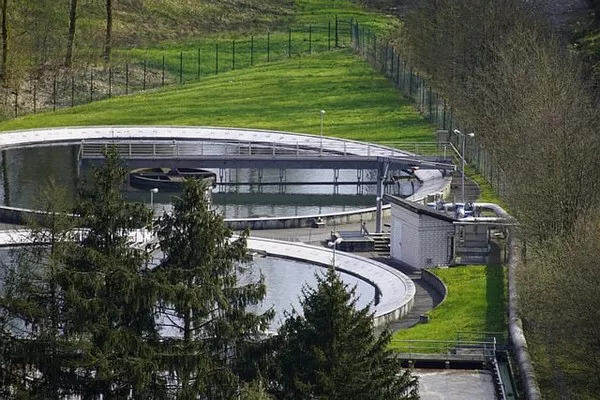The treatment of sewage is a critical aspect of modern urban infrastructure, ensuring the protection of public health and the environment. It involves a series of intricate processes designed to remove impurities, pollutants, and harmful pathogens from wastewater before it is safely released into the environment or returned to the water cycle. This article provides an in-depth exploration of the steps involved in sewage treatment, shedding light on the technologies and methods employed to safeguard our communities and ecosystems.
Collection and Conveyance
The journey of sewage treatment begins with the collection and conveyance of wastewater from various sources within a community. This raw sewage includes domestic, industrial, and commercial effluents, and it is typically transported through an extensive network of underground pipes and sewer lines. Gravity and pumping stations are employed to move sewage toward treatment facilities, where the real purification process commences.
Screening and Preliminary Treatment
Upon arrival at the treatment plant, the sewage undergoes a screening process. Large debris, such as sticks, leaves, and plastic, are removed through mechanical screens, preventing damage to downstream equipment. After screening, the wastewater undergoes preliminary treatment to remove grit and settle out heavier solids. This is often achieved through sedimentation tanks, where these solids settle to the bottom and are later removed for disposal.
Primary Treatment
Primary treatment is the next phase in sewage treatment, focusing on the removal of suspended and floating solids. It is a physical separation process that employs sedimentation tanks or clarifiers. During this stage, the sewage is allowed to settle, allowing organic solids to settle at the bottom as sludge, while lighter materials like grease and oils float to the surface and are skimmed off. The remaining liquid, known as primary effluent, moves on to the secondary treatment stage.
Secondary Treatment
Secondary treatment is where the real magic of sewage treatment happens. Its primary goal is to further reduce the concentration of organic matter and suspended solids in the wastewater. This step utilizes biological processes, mainly through the use of microorganisms, to break down and consume the remaining organic materials. There are two common methods for secondary treatment:
a. Activated Sludge Process: In this method, microorganisms are introduced into the wastewater in aeration tanks, where they consume organic matter. Afterward, the water is settled in secondary clarifiers, and the activated sludge (microorganisms and residual solids) is returned to the aeration tanks to maintain the process.
b. Trickling Filters: Trickling filters use a bed of rocks or plastic media, where microorganisms grow and attach themselves. Wastewater is trickled over this bed, allowing the microorganisms to consume organic matter as it passes through. The treated water is then collected and moved to the next treatment step.
Tertiary Treatment (Optional)
While primary and secondary treatment steps effectively remove most contaminants from sewage, some facilities may incorporate tertiary treatment for further purification, especially when the treated water is intended for reuse or discharge into sensitive ecosystems. Tertiary treatment employs advanced processes such as chemical coagulation, filtration, and disinfection to remove remaining pathogens, nutrients, and contaminants.
a. Chemical Coagulation and Flocculation: Chemicals are added to the wastewater to encourage the formation of larger particles that can be more easily removed through sedimentation or filtration.
b. Filtration: Tertiary filtration involves passing the water through sand, activated carbon, or other media to capture remaining fine particles and impurities.
c. Disinfection: To ensure the removal of harmful bacteria, viruses, and parasites, the treated water is subjected to disinfection using chlorine, ultraviolet (UV) light, or ozone. This step is vital when the effluent will be discharged into rivers or streams.
Sludge Treatment and Disposal
Throughout the sewage treatment process, sludge is generated as a byproduct. This sludge consists of the solids removed during primary and secondary treatment, as well as any residual microorganisms from the activated sludge process. Sludge treatment is a crucial aspect of sewage treatment, as improper management can lead to environmental contamination.
a. Thickening: Before further processing, sludge is often thickened to reduce its volume. This can be achieved through gravity thickeners, centrifuges, or belt presses.
b. Digestion: Sludge digestion is a biological process that reduces the organic content of the sludge and produces biogas (mainly methane). Anaerobic digestion is commonly used for this purpose.
c. Dewatering: After digestion, sludge is dewatered to reduce its water content and volume. This is often accomplished using mechanical methods such as belt presses or centrifuges.
d. Disposal or Beneficial Use: Depending on the quality of the treated sludge, it can be disposed of in landfills, incinerated, or used for beneficial purposes like soil conditioning or energy production.
Effluent Discharge or Reuse
Once the sewage has undergone the necessary treatment processes, the resulting effluent is either discharged into a receiving water body, such as a river or ocean, or reused for non-potable purposes like irrigation or industrial processes. Effluent discharge must meet strict regulatory standards to ensure that it does not harm aquatic ecosystems or public health.
Conclusion
The sewage treatment process is a multifaceted system that plays a vital role in safeguarding public health and protecting the environment. From the collection and conveyance of raw sewage to the various treatment stages and eventual effluent discharge or reuse, each step is meticulously designed and executed to ensure the removal of impurities, pathogens, and pollutants. As urban populations continue to grow, advancements in sewage treatment technology will remain essential in meeting the increasing demand for clean water and maintaining the ecological integrity of our waterways. Public awareness and support for responsible sewage treatment practices are crucial in sustaining our ecosystems and preserving the well-being of future generations.

